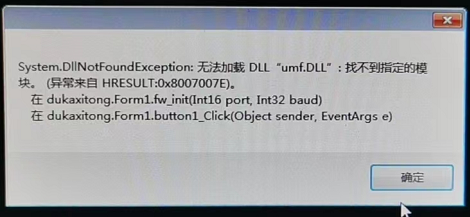类别:程序开发
日期:2023-02-08 浏览:1788 评论:0
一、导入外部DLL函数
如[DllImport(“kernel32.dll”)]这叫引入kernel32.dll这个动态连接库。这个动态连接库里面包含了很多WindowsAPI函数,如果你想使用这面的函数,就需要这么引入。举个例子:
[DllImport(“kernel32.dll”)] private static extern void FunName(arg,[arg]);
extern 作用:标识这个变量或者函数定义在其他文件 ,提示编译器遇到此变量的时,在其他模块里寻找,这里是在提供的动态库里找
示列代码:
using System;using System.Text;using System.Runtime.InteropServices;
namespace Windows.Help
{ public partial class SystemInfo
{
[DllImport("kernel32")]
public static extern void GetWindowsDirectory(StringBuilder WinDir, int count);
[DllImport("kernel32")]
public static extern void GetSystemDirectory(StringBuilder SysDir, int count);
public static void Main () {
const int nChars = 128;
StringBuilder Buff = new StringBuilder(nChars);
GetWindowsDirectory(Buff, nChars);
String t = "Windows路径:" + Buff.ToString(); System.Console.WriteLine(t);
}
}
}二、结构体时表明属性
如[StructLayout(LayoutKind.Sequential) ]与[StructLayout(LayoutKind.Explicit)] ,首先介绍一下 结构体和类的区别 :类是按引用传递 结构体是按值传递
进入正题:
结构体是由若干成员组成的.布局有两种
1.Sequential,顺序布局,比如
struct S1{
int a;
int b;
}那么默认情况下在内存里是先排a,再排b
也就是如果能取到a的地址,和b的地址,则相差一个int类型的长度,4字节
[StructLayout(LayoutKind.Sequential)]
struct S1
{ int a; int b;
}这样和上一个是一样的.因为默认的内存排列就是Sequential,也就是按成员的先后顺序排列.
2.Explicit,精确布局
需要用FieldOffset()设置每个成员的位置
这样就可以实现类似c的公用体的功能
[StructLayout(LayoutKind.Explicit)]
struct S1
{
[FieldOffset(0)] int a;
[FieldOffset(0)] int b;
}这样a和b在内存中地址相同





发表评论 / 取消回复